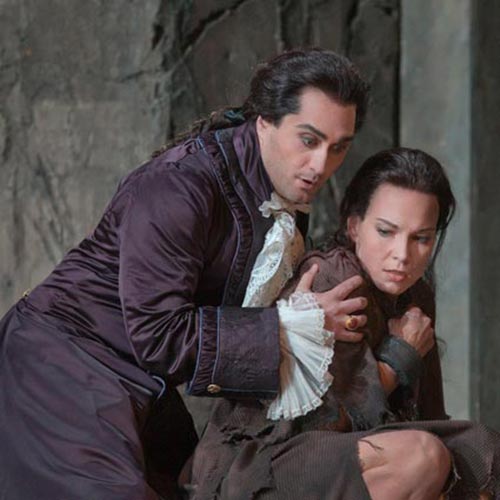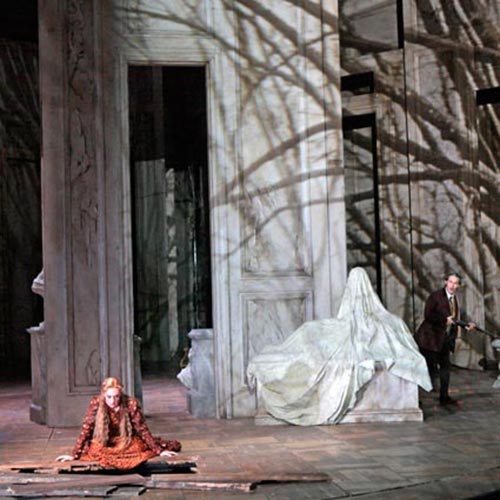
Wolfgang Amadeus Mozart
La Clemenza di Tito
This production ran: Mar 30 - Apr 20
This production is in the past.
Overview
Mezzo-soprano Joyce DiDonato sings Sesto at the Met for the first time, and tenor Matthew Polenzani adds yet another role to his extensive Mozartean repertoire as Tito. Mozart’s opera of vengeance and forgiveness, set during the Roman Empire, also stars Elza van den Heever as Vitellia, with Ying Fang, Emily D’Angelo, and Christian Van Horn completing the principal cast. Lothar Koenigs conducts.
Production a gift of the Lila Acheson and DeWitt Wallace Fund, established by the founders of The Reader's Digest Association, Inc.
Languages
Languages sung in La Clemenza di Tito
Sung In
Italian
Titles
Title languages displayed for La Clemenza di Tito
Met Titles In
- English
- German
- Spanish
- Italian
Timeline
Timeline for the show, La Clemenza di Tito
Estimated Run Time
2 hrs 52 mins
-
House Opens
-
Act I
66 mins
-
Intermission
30 mins
-
Act II
76 mins
-
Opera Ends
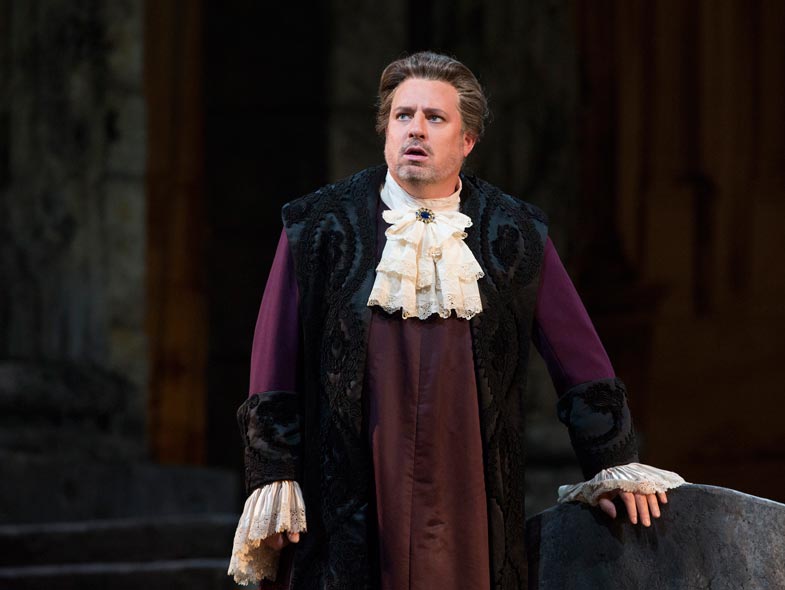
World Premiere: National Theater, Prague, 1791. Composed at the very end of Mozart’s life, La Clemenza di Tito is written in the old style of opera seria, giving us the full flower of Mozart’s mature genius within a structure as formal and stately as a baroque garden. One of the final operas to be written in this genre, the work was composed to celebrate the coronation of Austrian Emperor Leopold II as King of Bohemia in Prague. Built around set arias displaying vocal virtuosity, Tito is an opera appreciated for its unique elegance and for Mozart’s unquenchable humanity, which transcends any limitations of genre.
Videos
Creators
The music of the Austrian Wolfgang Amadeus Mozart (1756–1791), a prolific composer in virtually every form and genre known in his day, continues to enthrall audiences throughout the world. His achievements in his 22 operas, in terms of beauty, vocal challenge, and dramatic insight, are unparalleled. The text is an adaptation of a classic libretto by Pietro Antonio Domenico Trapassi (1698–1782), known as Metastasio. A Roman literary prodigy who became the prolific poet of the Imperial Court Theater in Vienna in 1730, he wrote 27 libretti that formed the basis for more than 300 operas.
PRODUCTION
Jean-Pierre Ponnelle
SET & COSTUME DESIGNER
Jean-Pierre Ponnelle
LIGHTING DESIGNER
Gil Wechsler
REVIVAL STAGE DIRECTOR
Peter McClintock

Composer
Wolfgang Amadeus Mozart
Setting
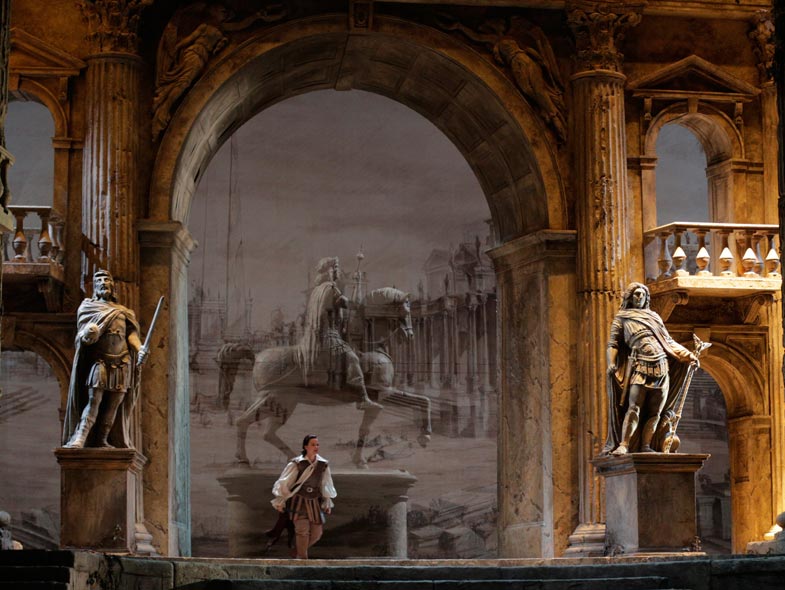
The work is set in Rome in the year 80 CE, at the time of Titus’s accession to the imperial throne. The place, however, is much more of a symbolic, idealized forum for the exploration of political ideas than the actual historical city.
Articles
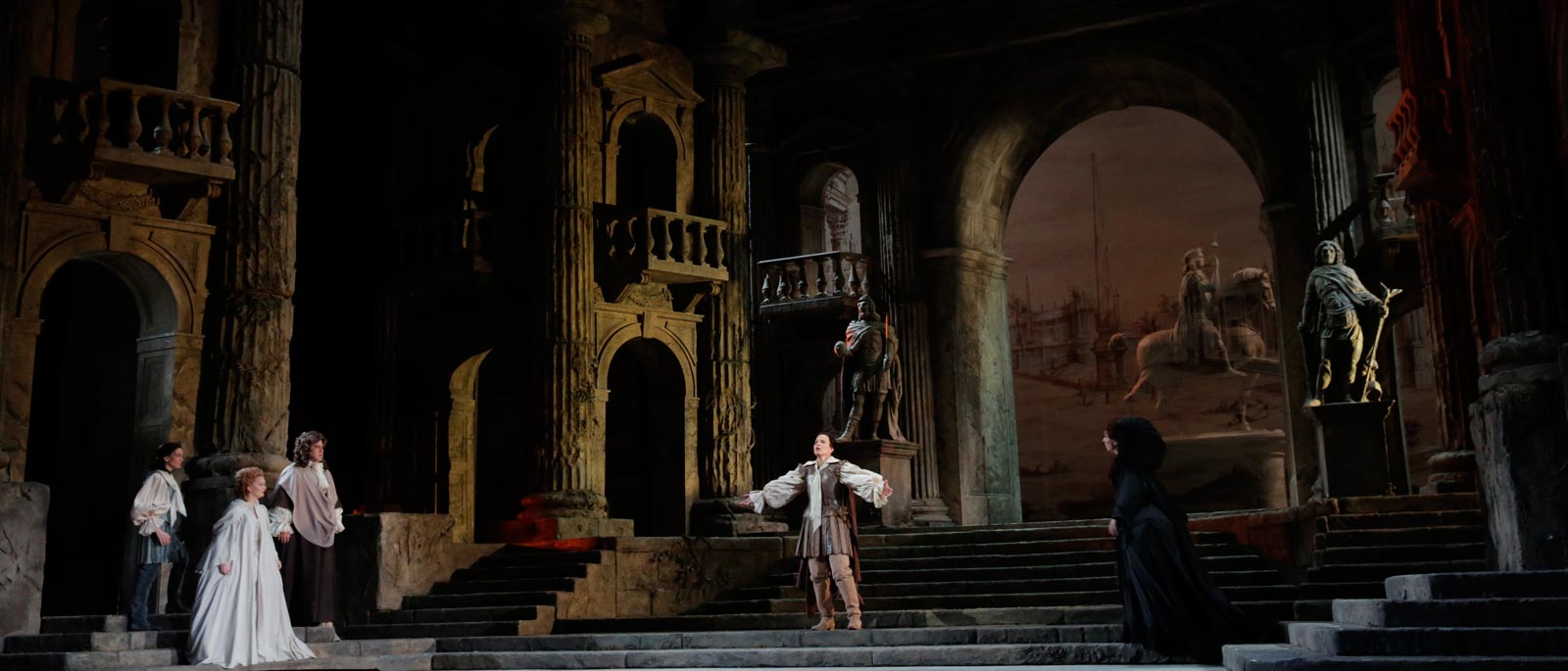
Music
The opera begins with a brilliant overture, reminding us that it was composed to honor a coronation. In general, though, the orchestra is used with great subtlety, never interfering with the singers and often spotlighting a solo instrument to counterpoint the vocal line. The formal structure of opera seria dictated that the solo numbers be meditations on the action, removed from real time. The mezzo-soprano’s Act I aria “Parto, parto,” in which Sesto reluctantly agrees to assassinate the emperor, is an example: The listener hears Sesto contemplating the deed rather than watching him commit it. The opera also contains several exquisite moments for multiple voices, another variation on the strict solo-voice emphasis in earlier operas of the seria type.
